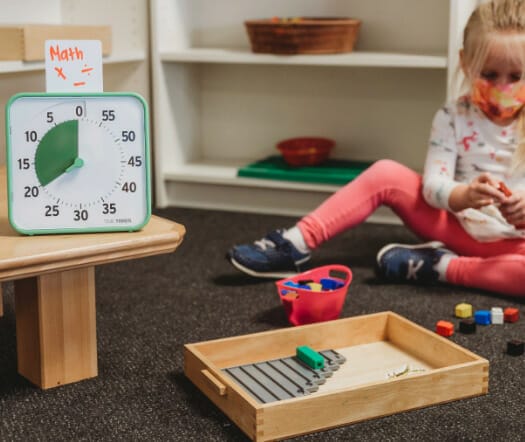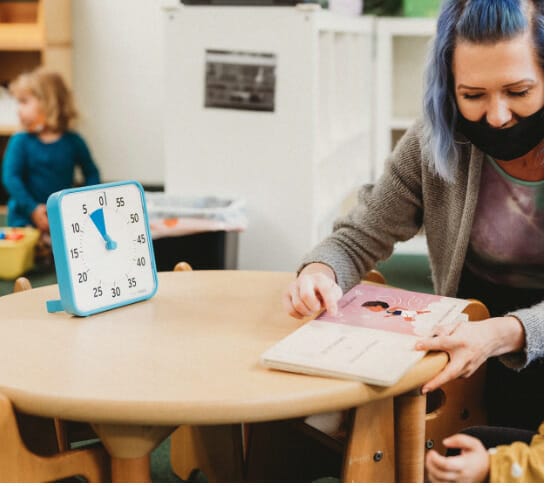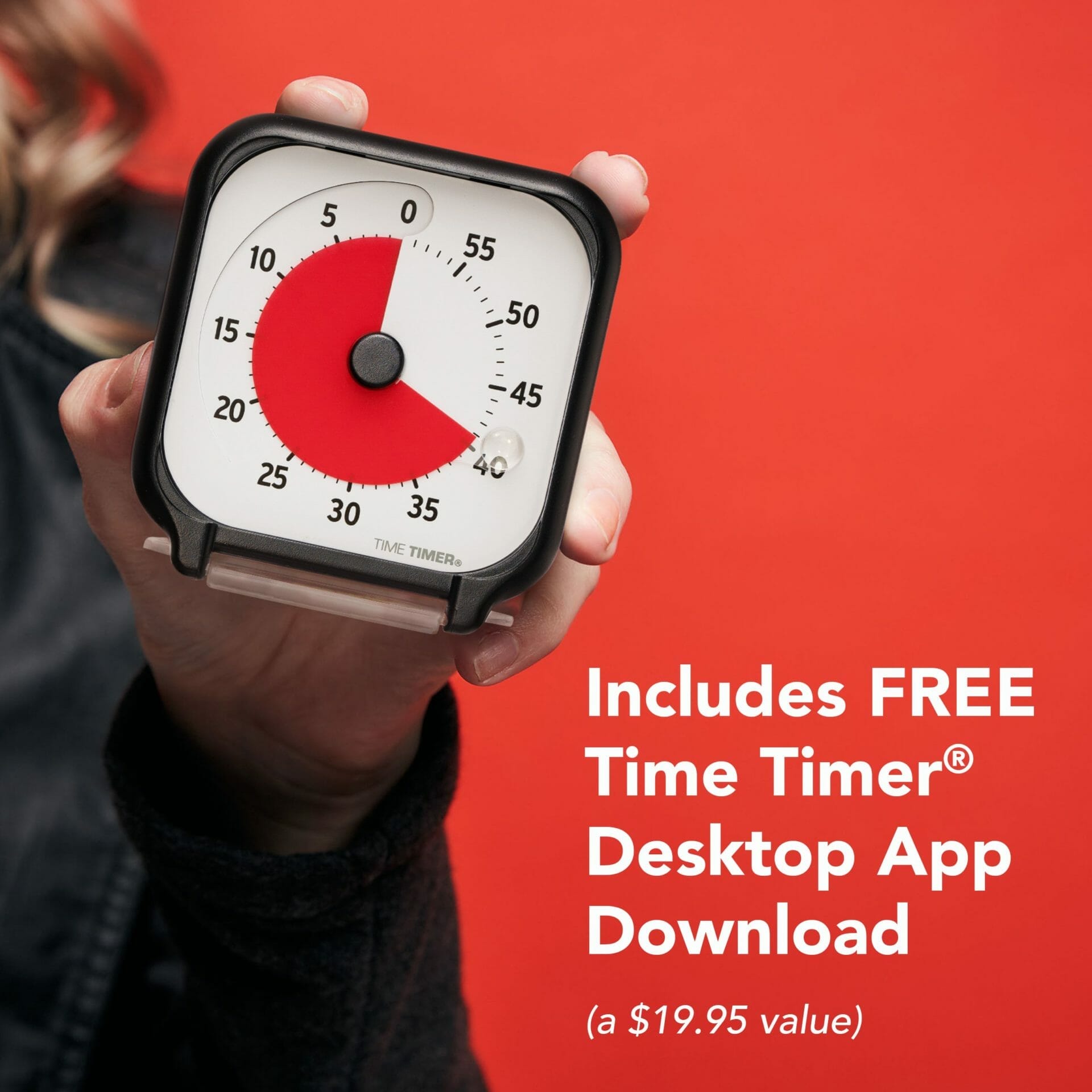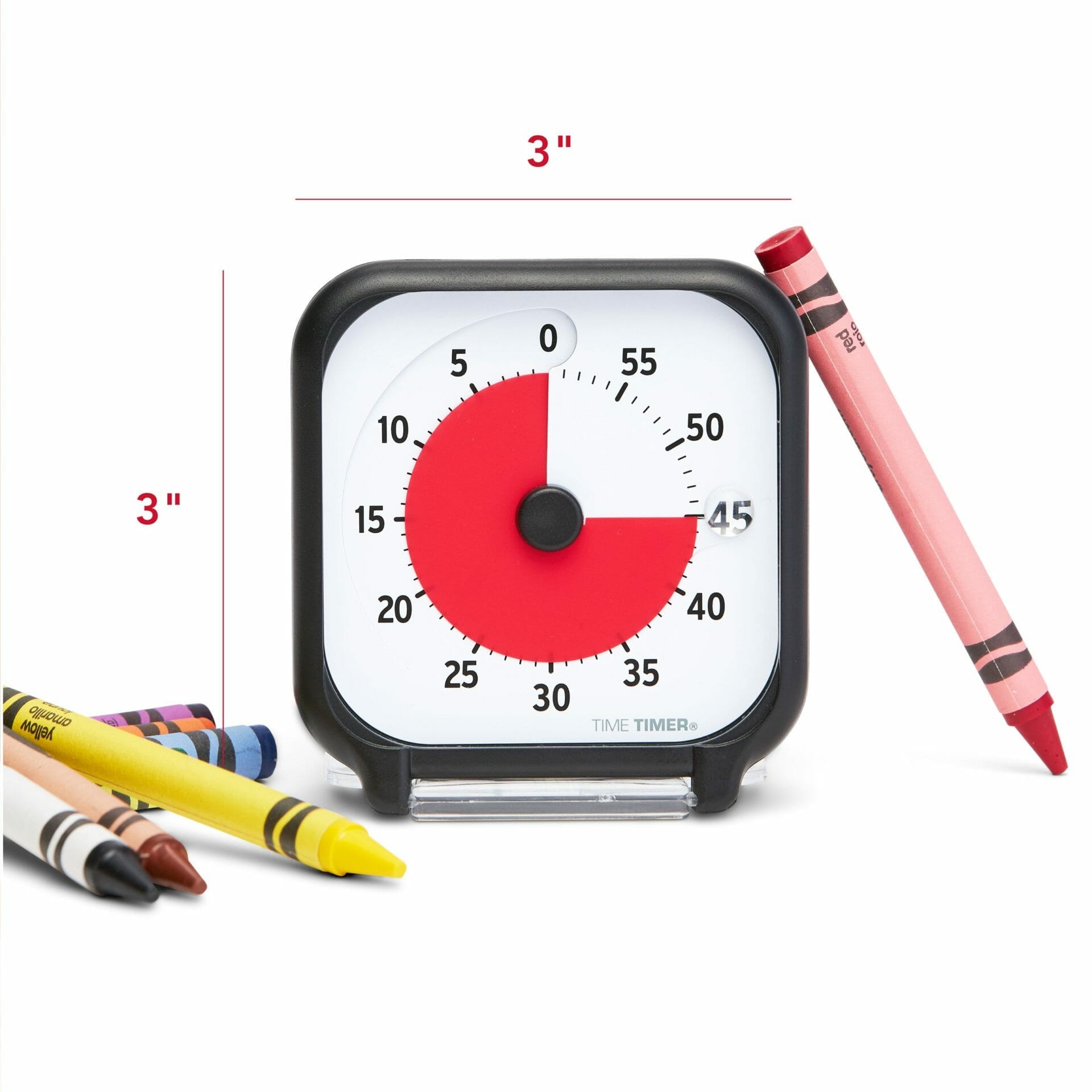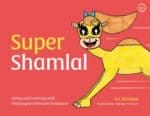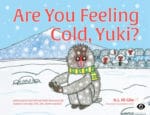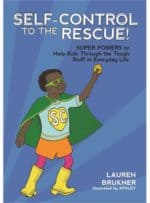

The (Slightly Distracted) Woman’s Guide to Living with an Adult ADHD Diagnosis
Being a woman in your thirties and beyond is challenging enough when your brain works the way society expects, add ADHD into the mix and it opens a whole new can of worms!
Written by Laura Kerbey with witty illustrations from Eliza Fricker and quotes from other ADHD woman from across the world, this accessible, lived experience guide is here to help you make sense of it all.
Candid, funny and validating, Laura offers a truly honest look into the realities of being a woman with ADHD, with chapters focused on parenting, rejection sensitive dysphoria, menopause, working life, mental health and relationships – Laura uses a combination of research and her own lived experience as a late-diagnosed ADHDer to provide advice you can actually use in your busy, everyday life.
$39.82
4 in stock
Portable Schedule with Digital Timer
Portable Schedule with Digital Timer | Links visual schedules with a time frame. Great for routines, concept of time, pre-warns how long until finish, self monitoring and more! Choose from the colours below.
$24.95
Time Timer – 20cm Medium
20cm Time Timer (Medium – previously known as large. Retains the same dimensions) | code: TT1 | Used as an interactive teaching tool, this classroom-tested teaching aide reinforces the sense of elapsed time with a graphic depiction of the time remaining. The Time Timer can be used to set time limits, measure the duration of activities and train students to make better use of available time. The size of the 20cm Time Timer makes it our most versatile product for both individual and group applications.
$65.00
31 in stock
Time Timer – 20cm (Medium) Classroom Set (Set of 3)
With the new Learning Center Classroom Set, the Time Time 20cm (Medium), a educator-favorite, is now available in a multi-pack set of three. Each set comes with three timers of different colours to aid in colour curriculum during the early years and for time management in colour-coded classrooms.
Available in two different colour sets:
- Primary Color Collection: Red, Yellow, and Blue, OR A
- Secondary Color Collection: Orange, Green and Purple.
Features
- Each set includes three Medium visual timers (20cm x 20 cm) in three different colours
- Includes three (3) dry erase cards for 1:1 Activity Management
- Includes one (1) free download of Time Timer Desktop App
- Includes bi-fold guide for using center timers in the early learning classroom
- Silent operation with optional audible alert at end of timing
- Magnetic back and fold-up feet
- Protective lens with center-set knob
- Each timer requires 2 AA/1.5V batteries (not included)
$245.00
Time Timer – 7.6cm Small
7.6cm Time Timer (small) | code: TT 2 | Used as an interactive teaching tool, this classroom-tested teaching aide reinforces the sense of elapsed time with a graphic depiction of the time remaining. The Time Timer can be used to set time limits, measure the duration of activities and train students to make better use of available time. The small size and durable lightweight construction of the 7.6cm Timer make it simple to carry for easy accessibility. During use, a clear cover protects the Timer face or flips open to serve as a stand. With the Time Timer Audible you have the option to use a visual depiction only, or add sound to signal the end of a time segment.
$50.00
75 in stock
Time Timer MOD – Charcoal Colour
Portable and quiet with a protective cover, the Time Timer MOD is a great way to promote efficient time management at work, school and home. The Time Timer MOD is approximately 9.5 cm by 9.5 cm and suits the more ‘destructible’ child. Comes with a charcoal cover – optional coloured covers (blue, berry or green) sold separately.
$60.00
48 in stock
Time Timer PLUS
Time Timer PLUS| code: TT 5 | The Time Timer PLUS is a unique visual timer and the ideal solution for anyone who struggles with time. For over 20 years, children, adults and groups have used the Time Timer to stay focused, productive and relaxed throughout the day. As time elapses, the signature red disk disappears, creating a clear and simple picture of the time remaining. Portable and quiet with a protective cover, the Time Timer PLUS is a great way to promote efficient time management at work, school and home. The Time Timer PLUS is approximately 14.5 cm by 18 cm and suits the more ‘destructible’ child. Features: *Light weight anti-static disk *Protective glare-free lens *On the go carry handle, high grade ABS plastic *Centre dial for setting the disk *Volume control dial *Requires 1 AA battery
$80.00
57 in stock
Sue Larkey’s MEGA BOOK of Timesavers, Tips & Strategies for Busy and Complex Classrooms
A MEGA book full of my most Popular Blogs, Tip Sheets and more in one easy to use reference! This book is for all ages and stages, for teaching neurodiverse students including Autism Spectrum, ADHD, ODD, PDA and more!
Includes index to quickly look up Topic & Tips, as well as ideas for all parts of teaching and looking after neurodiverse children. 142 pages of Strategies & Tips at YOUR Fingertips.
$49.95
9 in stock
Red Beast Anger Workbook
This very practical workbook shows Danni coming to terms with the reasons for his angry outbursts and learning ways to control his Red Beast.
Included are a number of black & white illustrations from the new edition that are excellent for discussion times – the children can colour them in as you talk about the content – very therapeutic.
Suitable for ages 5 to 10.
$48.95
10 in stock
More Kay Al-Ghani Books
-
The Red Beast
$45.95 -
The Panicosaurus
$45.95 -
The Disappointment Dragon
$45.95 -
The Green-Eyed Goblin
$45.95 -
Winston Wallaby Can’t Stop Bouncing
$45.95 -
Super Shamlal – Living and Learning with Pathological Demand Avoidance
$45.95 -
Are You Feeling Cold, Yuki?
$45.95 -
Red Beast Anger Workbook
$48.95 -
The Red Beast Bundle
$94.90
The Mindful Magician And The Trip To Feelings Town
by Lauren Brunker
Empower children with self-regulation strategies for emotions and sensory experiences through interactive storytelling. Learn, adapt and conquer with the Mindful Magician.
$42.95
7 in stock
More From Lauren Brunker
-
How to be a Superhero called Self-Control
$45.95 -
Stay Cool and In Control With The Keep-Calm Guru
$45.95 -
Self-Control to the Rescue
$45.95 -
The Kids’ Guide to Getting Your Words on Paper
$38.95 -
The Mindful Magician and the Trip to Feelings Town Tips and Tricks to Help the Youngest Readers Regulate their Emotions
$42.95
Fidget Tools
-
Spinning Tops (3 for $3)
$3.00 -
Wooden Massager
$6.00 -
Punki Wrist Band
$3.00 -
Smiley Face Stress Ball
$3.00 -
Frog Stretch Toys (6 for $3)
$3.00 -
Improbable Construct Fidget
$6.50 -
Putty
$4.00 -
Water Ball
$4.00 -
Mesh Stress Ball
$5.00 -
Pom-Pom Key Chain
$4.50 -
Alien Stretch Toys (6 for $3)
$3.00 -
Lizard Stretch Toys (6 for $3)
$3.00 -
Liquid Timers
$15.95 -
Liquid Key Ring Sensory Tool
$5.00
Great Books for Pathological Demand Avoidance (PDA)
The Educator’s Experience of Pathological Demand Avoidance An Illustrated Guide to Pathological Demand Avoidance and Learning
An Empowering PDA education guide. Practical Ideas for educators:
- Understand Pathological Demand Avoidance (PDA): It’s a unique autism type that requires a different approach.
- Re-evaluate teaching strategies: Traditional autism strategies may not work for PDA students.
- Connect with your student: Foster strong relationships to ensure mutual understanding and cooperation.
- Create an autonomous, spontaneous environment: This is conducive for PDA students and can help them thrive.
- Personalize the learning experience: Tailor your teaching techniques to match individual student’s needs.
- Implement PDA-friendly learning: Educate yourself about PDA to better support your student’s learning experience.
- Utilize entertaining and engaging resources: Use illustrations and fun anecdotes to make learning more enjoyable for the student.
- Be open to change: Recognize that effective teaching may require changing pre-existing methods and perspectives.
I realised EVERYTHING I was doing was wrong. I needed to learn. I needed to change. During Laura Kerbey’s time teaching autistic children, she had a sudden realisation that those with Pathological Demand Avoidance (PDA) are children like no other! None of her tried and tested autism strategies would work to help them focus or learn and most of her time was spent wondering, what am I doing wrong? If you feel the same, this short, easy-to-read guide is here to teach you everything you need to know from one educator to another. With an introduction to what PDA is followed by PDA tailored advice on how to connect with your student and create an autonomous, spontaneous environment that is personalised for you both, this guide is here to ensure that you and your PDA student thrive! Illustrated by the popular Eliza Fricker and packed with entertaining anecdotes (including one about Jabba the Hut’s poo), this go-to-guide contains everything you need to start implementing PDA friendly learning to help you connect with your student and help them make the most of their learning experience.
Can I tell you about Pathological Demand Avoidance syndrome?
| by Ruth Fidler and Phil Christie | Meet Issy – an 11-year-old girl with Pathological Demand Avoidance syndrome (PDA), a condition on the autism spectrum. Issy invites readers to learn about PDA from her perspective, helping them to understand how simple, everyday demands can cause her great anxiety and stress.
This illustrated book is for readers aged 7 and upwards, and will be an excellent way to increase understanding about PDA in the classroom or at home. It also includes practical tips and recommended resources for parents and professionals.
$31.95
4 in stock
Can’t Not Won’t. A Story about a child who couldn’t go to School
Pda autism school refusal is a major issue. Eliza Fricker gets it. Her compelling, hard-hitting and irreverently humorous illustrations follow a family through the early days of school avoidance, the process of accessing support and the challenges of coping in the meantime. Can’t Not Won’t illuminates the absurdity and frustrations that often arise when dealing with health, social and educational systems and will help any parent in the same boat feel seen. This guide acts as a way to communicate these difficult circumstances with others.
Wonderfully relatable, the book also includes written guidance for parents and professionals on what works best when it comes to managing school avoidance.
$42.95
5 in stock
The Teen’s Guide to PDA
This insightful and accessible guide is an essential resource for educators working with teenagers who have Pathological Demand Avoidance (PDA), a profile on the autism spectrum.
- Comprehensive Overview: Explore the unique challenges faced by teens with PDA, including hormonal changes, social pressures, and the complexities of their neurodivergent experiences.
- Neurodiversity-Affirming Approach: Learn how to recognize and celebrate the strengths associated with PDA while addressing areas of difficulty.
- Practical Strategies: Discover effective techniques for:
- Adapting your teaching methods to accommodate PDA-specific needs
- Creating a supportive classroom environment
- Helping students manage anxiety and rejection sensitivity dysphoria
- Facilitating self-advocacy skills in your students
- Communication Tools: Gain insights into explaining PDA to colleagues, parents, and neurotypical students, fostering a more inclusive educational community.
$42.95
1 in stock
New Books From Kathy Hoopmann
All About Dyspraxia
Endorsed by education professionals:
"This book would be a wonderful resource in any classroom." -- Kirsten Harpley, MEd(InclEd) MAutismSt
"A brilliant book that takes the complexities of dyspraxia and makes it understandable. A very good introduction to the disorder for kids, families, and teachers alike." -- Warren Fried, President and Founder, Dyspraxia USA
Written with Hoopmann's characteristic warmth and insight, this resource bridges the gap between professional understanding and practical application in the classroom. The accessible format and gentle humor make it an engaging professional development tool that can be readily shared with colleagues, students, and parents to create a more inclusive learning environment.
Whether you're supporting a newly diagnosed student, building an inclusive classroom library, or enhancing your professional understanding of learning differences, All About Dyspraxia is an essential addition to your educational toolkit that will benefit your entire classroom community.
All About PDA
This book shows how PDAers see and experience the world and highlights the unique characteristics that make them special. A perfect introduction to PDA for those recently diagnosed, as well as their families, friends, and the people who work with them
$37.95
20 in stock
Pathological Demand Avoidance (PDA) in the Classroom: Understanding and Teaching Strategies for Educators
Books to Understand Girls With Neurodiversity
Understanding ADHD in Girls and Woman
$63.95
4 in stock
I am an Autistic Girl
A book for young girls with autism spectrum conditions
Lizzie is an Autistic Girl – she has Asperger’s Syndrome, which means that her brain works differently to her friends, and even to boys with Asperger Syndrome. In this book, Lizzie explains what it’s like to be an Autistic Girl, including how she has a special talent for blending in with her friends, how she gets really tired after being at school all day, how she worries about making mistakes, and how she finds it hard to understand how she is feeling.
$42.95
9 in stock
The Spectrum Girl’s Survival Guide: How to Grow Up Awesome and Autistic
“Never be ashamed of being different: it is this difference that makes you extraordinary and unique.”
This essential go-to guide gives you all the advice and tools you’ll need to help you flourish and achieve what you want in life. From the answers to everyday questions such as ‘Am I using appropriate body language?’ and ‘Did I say the wrong thing?’, through to discussing the importance of understanding your emotions, looking after your physical and mental health and coping with anxiety and sensory overloads, award-winning neurodiversity campaigner Siena Castellon uses her own experiences to provide you with the skills to overcome any challenge.
With practical tips on friendships, dating, body image, consent and appearance, as well as how to survive school and bullying, The Spectrum Girl’s Survival Guide gives you the power to embrace who you are, reminding you that even during the toughest of teen moments, you are never alone.
$42.95
2 in stock














